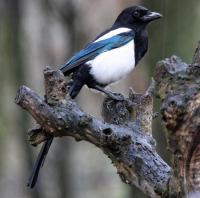- Home
- FAQs
- Customer Video Gallery
- Customer Photo Gallery
- Bird Facts
- Bird Food Blog
- Bird Information
- Feeding Advice
- Small Animal Information
- A to Z of Guinea Pigs
- A to Z of Hamsters
- A to Z of Rabbits
- Basic Care for Guinea Pigs
- Basic Care for Hamsters
- Basic Care for Rabbits
- Basic care for Chinchillas
- Basic care for Ferrets
- Basic care for Gerbils
- Basic care for Mice
- Basic care for Rats
- Buying a Healthy Small Animal
- Does your Reptile need a Licence
- Equipment for Ferrets
- Equipment for Hamsters
- Equipment for Mice
- Equipment for your Chinchilla
- Equipment for your Gerbil
- Equipment for your Guinea Pig
- Equipment for your Rabbit
- Keeping a House Rabbit
- Dog Information
- Cat Information
- Customer Information
- Fat Balls
- Suet Pellets
- Straights
- Seed Mixes
- Suet Treats
- Mealworms
- Bird Feeders
- My Account
Just a Smidgen of Good News
Date: 2017-08-25 11:30:23 | Category: Bird Protection | Author: David Cole
Just a smidgen of good news (is that really a proper word – or one of my old grandfather’s made up ones?)Wild Bird Populations in the UK, 1970 to 2015 is published by DEFRA and has a slightly hopeful observation or two regarding farmland birds. We live in the countryside so our Farmland species tend to overlap with our Woodland and Garden types of bird.
Whatever! The bird feeding stations are just as busy as ever and there does not seem to be a lot of arguing going on out there – except at the arrival of one of the Jays, Magpies or other egg and chick stealing corvids. The hedges are full of nests and the annual murder most foul of the nestlings is in progress – my wife saw a Jay with egg in beak chased into the distance by up to eight blue-tits. The bravery of the tiny birds is inspiring.
Back to the report…..basically anything that we can do to help out bird populations can only be good – and not stopping with the feeding at the bird tables just because there seems to be other food about is really important.
I learned of the Defra report in a newsletter from the British Trust for Ornithology and attach that below – the BTO is a great organisation and well worth joining – here is what they say…..
“For over a decade now many of our birds have been showing worrying declines but the latest report shows that 2015 proved to be a good year for some. In particular, farmland birds have been declining since the late seventies in the UK, but between 2014 and 2015 the farmland bird indicator for the UK showed a significant 6% increase. This is mainly due to an increase in the indicator for farmland generalist species. Conversely, farmland specialist species, which are those that are highly dependent on farmland habitat, did not show a significant change over the same time period. It is unclear at this stage whether this is the beginning of a change in their fortunes or just a short-term blip. It is also unclear what might be responsible for this change."
Amanda Trask, Research Ecologist at the BTO, said “This is great news but we shouldn’t get too carried away at this stage. These short-term upturns are against a backdrop of long-term decline and we still have a long way to go before our birds are out of trouble. What we can be sure of is that the wonderful volunteers who monitor our birds will continue to keep an eye on them into the future, ensuring that we know exactly how they are doing.”
Since 1970 the UK wild bird indicators suggest we have lost over half of our farmland birds, almost a fifth of our woodland birds and just under a quarter of our seabirds. More recently these declines have slowed and when we look at all species combined there has been a 6% decline between 2009 and 2014, with generalist species doing better than the specialists.
Wild Bird Populations in the UK, 1970 to 2015 is published by DEFRA and the bird population indices are compiled in conjunction with the British Trust for Ornithology (BTO), the Joint Nature Conservation Committee (JNCC) and the Royal Society for the Protection of Birds (RSPB).
To see the full report, please visit https://www.gov.uk/government/statistics/wild-bird-populations-in-the-uk.




.jpg)
